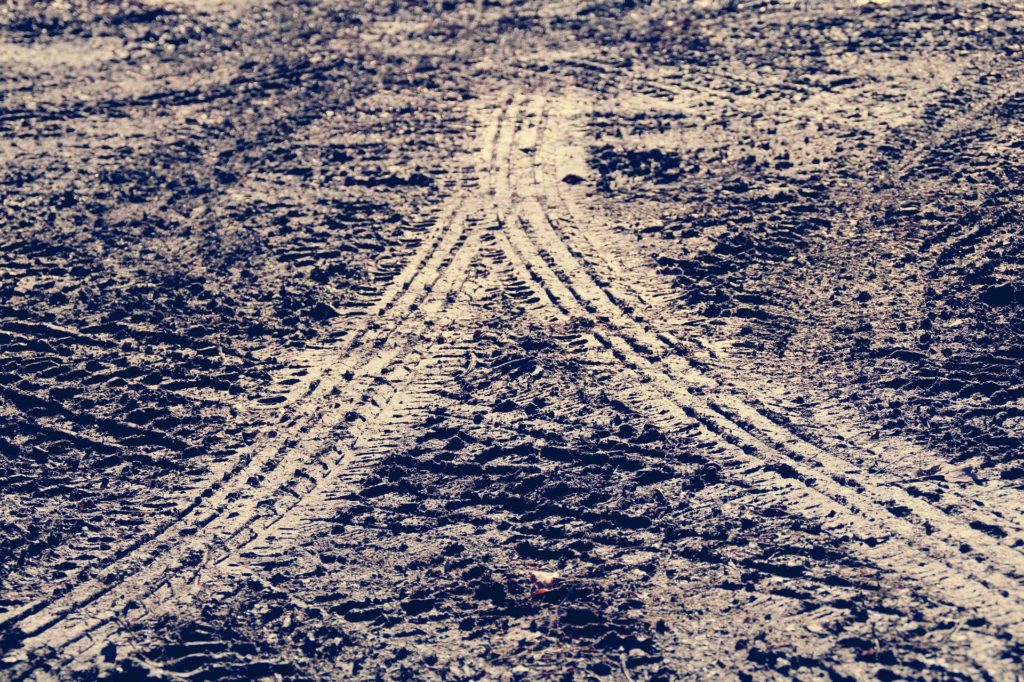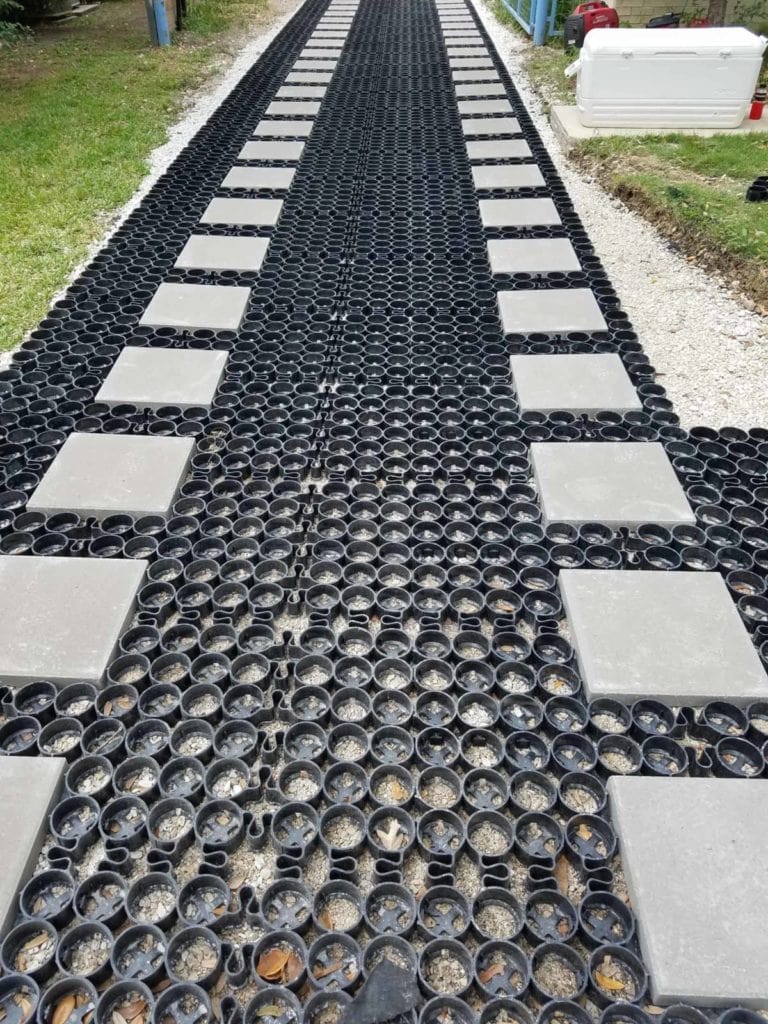If you have dirt pathways running through your commercial landscape, chances are they get muddy when it rains. Dirt pathways can often seem like an inexpensive and convenient solution to paving when you’re building pathways on your landscape, but rain can get them extremely messy in a hurry.

This might be fine for your backyard or another residential use, but for a commercial business, it’s a bad look. You don’t want sloppy, muddy trails running through your property because they muck up people’s shoes, track mud into your building, and generally look unprofessional.
So, to optimize your commercial landscape pathways, you need paving. But, with so many different types of pavement out there, it can be hard to make the right choice for your landscape. Luckily we’ve got you covered. In case you’re looking for a way to upgrade your muddy pathways, let’s take a look at some of the best solutions.
Asphalt
Asphalt is one of the most common paving materials, and for good reason. It’s cheap, relatively durable, and looks great as a finished product. Unfortunately, there are some downsides to using asphalt as well, rendering it one of the less desirable muddy path solutions. Maintenance, for starters, can be rather costly.
Over the 15-30 year lifespan of asphalt, you need to reseal it every five years and resurface it every 10. Resealing, and especially resurfacing are both costly, labor-intensive projects that can take days to complete. Asphalt also has vulnerabilities to weather and water. Freeze/thaw cycles can create cracks that widen over time.
Hot weather makes asphalt sticky as well, and foot traffic can cause an unraveling of the gravel in the top layer of your asphalt path. All of these things speed up the maintenance timeline for your asphalt and bring it to ruin if not addressed.
Concrete
Another one of the most popular muddy path solutions is concrete. Concrete is more expensive than asphalt and takes longer to install. It offers a different aesthetic appeal, and is available in white, off-white, and grey colors, most often. It can also be stamped with designs, graphics, or even patterns that make it resemble other types of pavement.
Concrete does have a lot of the same issues as asphalt, though. Although it’s not vulnerable to hot weather, cold weather makes concrete brittle and more likely to crack. Freeze/thaw cycles also take a toll, paving the way for water to infiltrate the surface and cause major damage. In addition, concrete needs the same type of maintenance that asphalt does, and just as often.
Concrete also takes an incredibly long time to install compared to most other paving materials. This is because it needs multiple curing sessions where freshly poured concrete is given time to dry before any further work is performed on it. You could order premade concrete slabs, but that option is more expensive as well.
The Importance of Permeability

A major downside to both concrete and asphalt, as well as materials like stone pavers and bricks, is that they’re impermeable. These types of materials do not let water pass through them and thus, need some way to manage stormwater.
For stone pavers and bricks, you can make the spaces in between them permeable by filling them with sand so that water can drain into a sub-surface layer of gravel that allows the water to naturally trickle back into the soil, as nature intended.
Asphalt and concrete can be found in semi-permeable varieties that allow water to drain through them at a very slow rate. These materials are even less durable than regular concrete and asphalt, though, and are easily clogged by debris.
TRUEGRID Permeable Pavers are the Optimal Solution for Your Muddy Pathways
Of all the muddy path solutions, permeable plastic pavers are the best. For commercial pathways, pavers like those made by TRUEGRID come with all the benefits you need and none of the issues that concrete and asphalt do. They cost about the same to install, but installation is easy, and takes a fraction of the time that it does with most other paving materials.

TRUEGRID PRO LITE and TRUEGRID PRO PLUS pavers are perfect for walkways on commercial landscapes because they can last up to 60 years with almost no maintenance required. They are vastly more durable than asphalt, concrete, stone, and brick, and have no vulnerabilities to extreme weather or freeze/thaw cycles. They don’t need to be sealed and are resistant to insects, UV rays, and any other potential deteriorating factor you can think of.

One of the best things about TRUEGRID pavers, and something that sets them apart is the fact that they are 100% permeable. This allows them to handle even the heaviest of rainstorms with ease, by effortlessly draining water directly through them and into a gravel sub-base.

The installation process for TRUEGRID pavers is simple, and requires no heavy equipment other than a heavy roller and a mini-excavator. First, the pathway is excavated to a depth of 6 inches before fabric is laid at the bottom to prevent gravel migration.
Then, the base aggregate is spread and compacted. Next, TRUEGRID pavers are snapped into place over the top as easily as LEGO® blocks and filled with more gravel. After the gravel has been settled into the empty cells of the pavers, the installation process is complete.
Take Your Commercial Pathways to the Next Level with TRUEGRID
Traditional muddy path solutions like asphalt, concrete, brick, stone, or others can be tempting to implement in your commercial pathways. But TRUEGRID is the best way to clean up a muddy dirt pathway.

If you want to eliminate maintenance concerns, save money in the long run, and build gorgeous clean-cut pathways that have no issues with mud, call TRUEGRID today to get in touch with a pavement specialist who can point you in the right direction.



